Renting and operating a skid steer can be intimidating. Read our tips on how to operate a skid steer properly including basic operations, hauling and safety, plus recommendations on which type of machine to rent.
How to Operate a Skid Steer
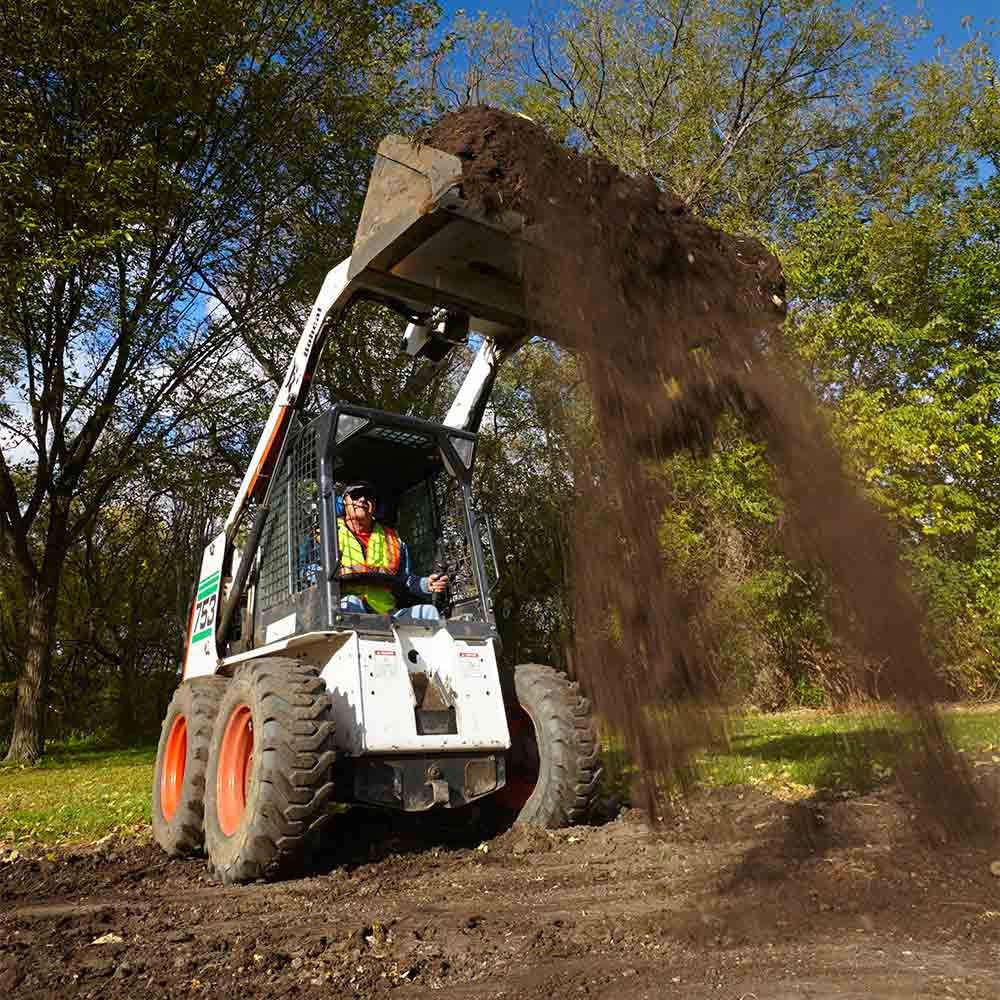
How Much Does It Cost to Rent a Skid Steer vs. Hiring a Pro?
A medium-size skid steer costs about $200 to rent for one day (not including the trailer or delivery fees), or about $600 per week. A pro operator will charge $65 to $95 per hour. So think it through. It may cost less to hire a pro than to rent a machine and operate it yourself. If all you have to do is smooth out some black dirt in a customers suburban backyard, hire a pro. Achieving a smooth, dip-free grade is trickier than it looks, and it will likely take you much longer than a pro and end up costing more. And it takes many hours of practice to become proficient at complex jobs like working on slopes or building boulder walls.
Digging and moving dirt are relatively easy, and you can get the hang of them pretty quickly, so renting a skid steer makes sense for those jobs where you have to move copious amounts of soil from point A to point B. Renting also makes sense if there will be a lot of downtime between uses of the skid steer, like intermittently hauling sand and pavers for a large patio or other landscaping projects. Renting isn’t cheap, so make sure everything is ready to go the minute you get the machine to the site.
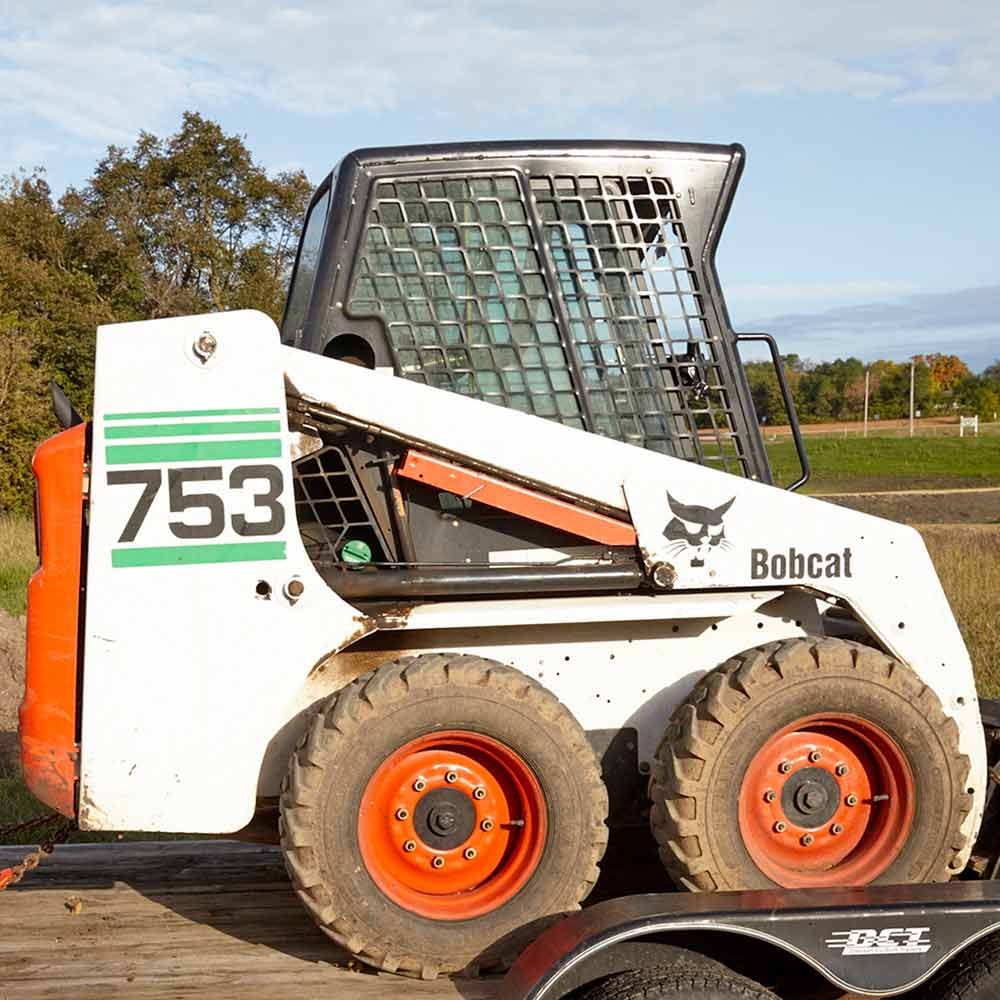
Which Skid Steer Is the Best to Rent?
Bigger isn’t always better: Smaller machines work great in tight areas (to backfill inside basements, for example), and in wooded areas where the trees are fairly close together. Smaller machines also do less damage to finished lawns. Bigger machines often have bigger buckets and can obviously lift heavier stuff.
Skid steers with tracks are often called compact track loaders. Tracked machines are gentler on lawns and less likely to get stuck, but they will cost about 25 percent more to rent.
You use levers to steer a skid steer, and either hand joysticks or foot pedals to control the bucket and lift arm. You’ll find pros that prefer one over the other, but the learning curve on both is similar. Go with the hand controls if you’re still bothered by that old high school knee injury, or do the opposite if you have trouble with your wrist.
Skid steers are available at some rental centers, and most heavy-equipment dealers rent them as well.
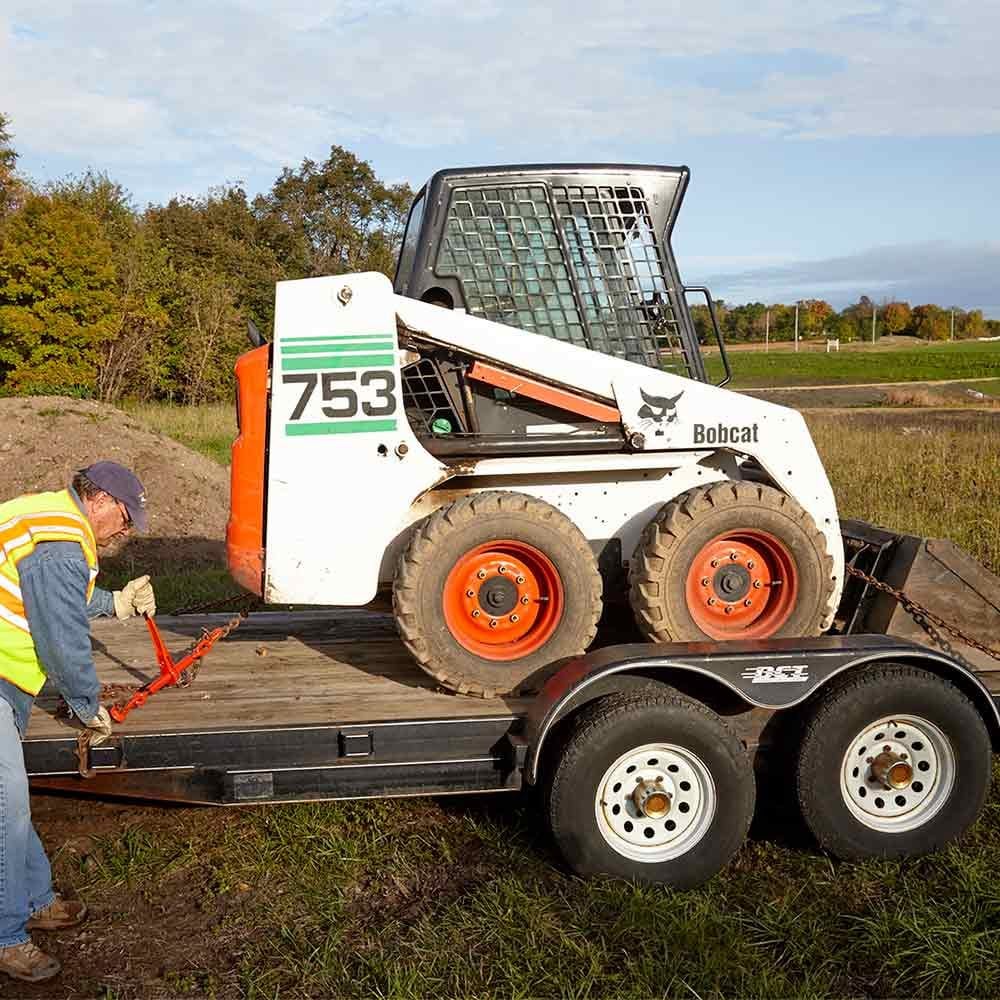
How to Safely Haul a Skid Steer
Make sure you know the weight of the equipment you’re hauling and whether you have an adequate, truck, trailer and trailer hitch to safely haul it. Trailers typically list tow capacities on the tongue, and trucks display it on the inside of the driver’s doorjamb. The bulk of the weight should be over, and just in front of, the trailer tires. You want more weight toward the front of the trailer, but not so much that the front truck tires lose traction. You should see the rear truck bumper drop several inches when you drive forward on the trailer. The straps or chains should be pulling the machine toward both the front and the back (kind of like the old torture rack).
If you’ve never pulled a trailer before, hauling a skid steer is probably not the place to start. Ask the folks at the rental center to deliver it.
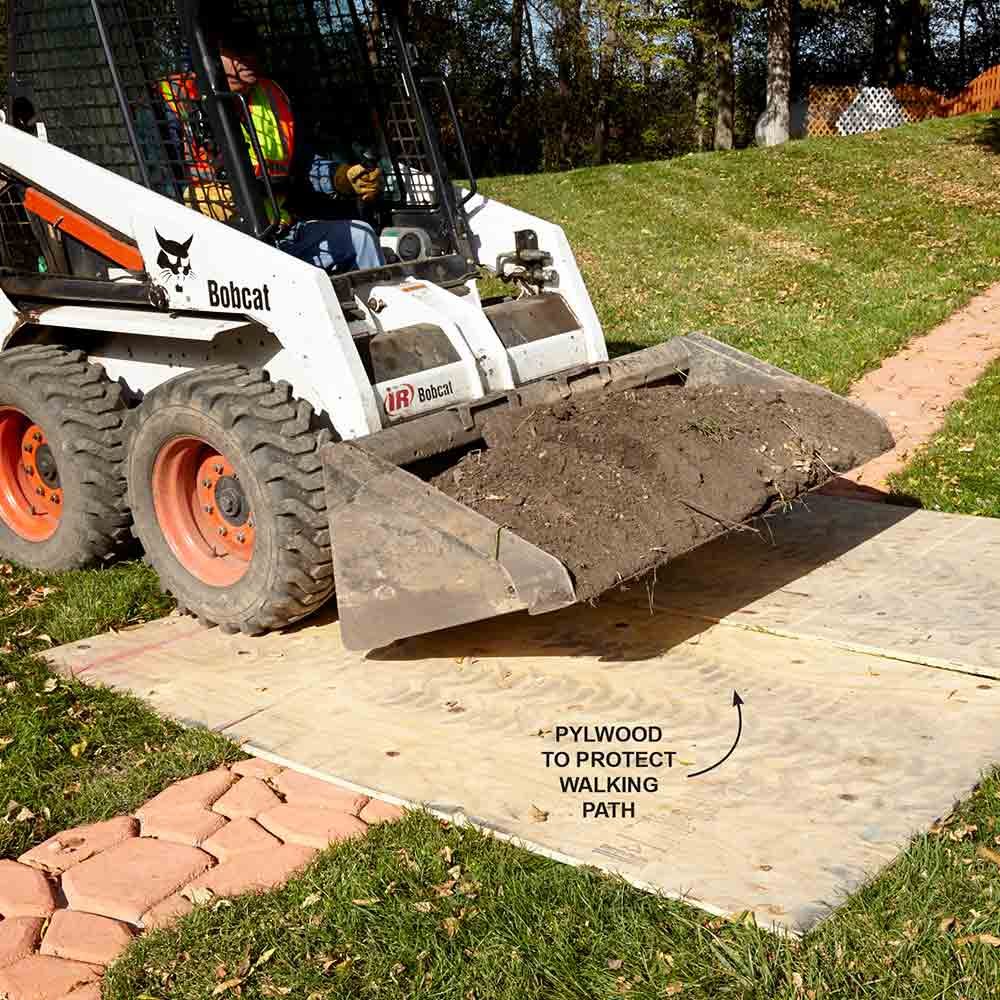
Protect Landscaping from a Skid Steer with Plywood
Skid steers are heavy—really heavy. Protect sidewalks, walkways and patios with a piece of plywood. And don’t drive over septic mounds, tanks or drain fields.
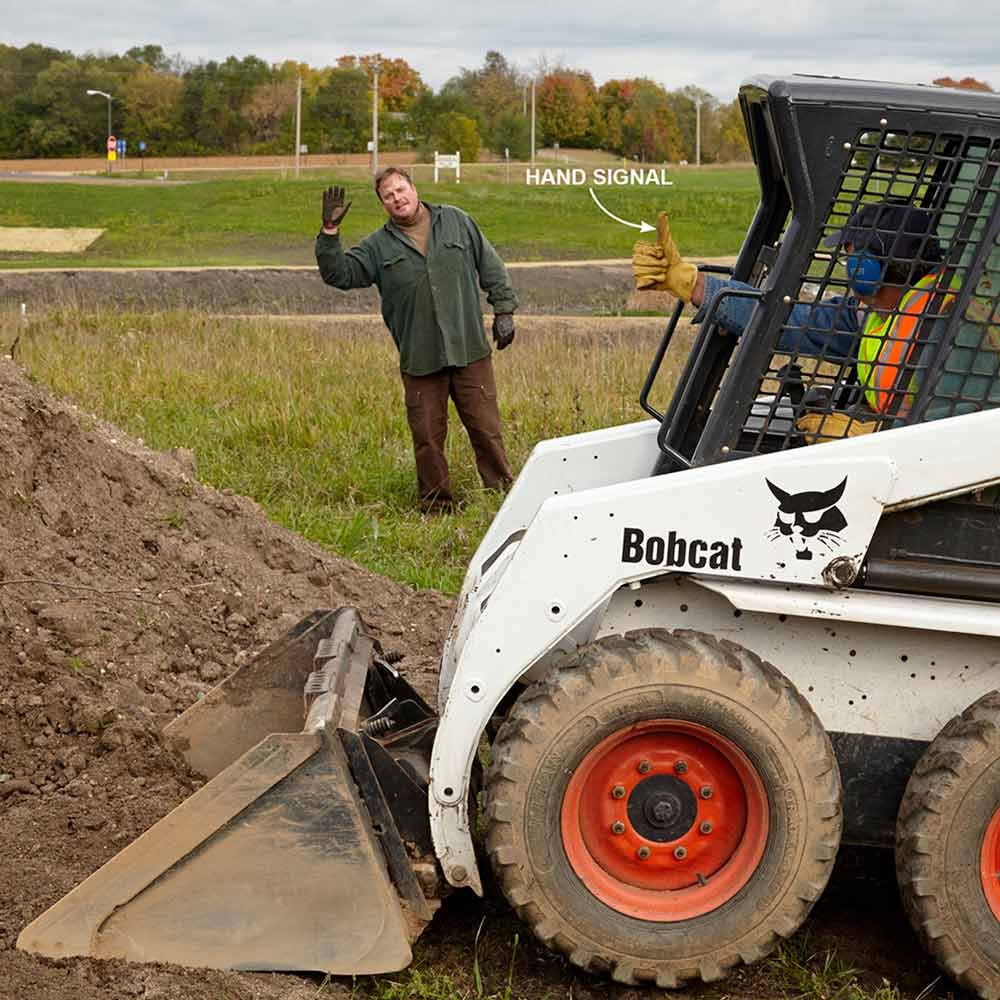
Avoid Skid Steer Accidents
The first thing you might notice when you climb into a skid steer is that it’s almost impossible to see behind you. The blind spots on the sides can also be severely restrictive, depending on the height of the lift arms.
Caution: Tell everyone in and around the work area not to approach the skid steer unless they get a clear and recognizable signal, like thumbs up
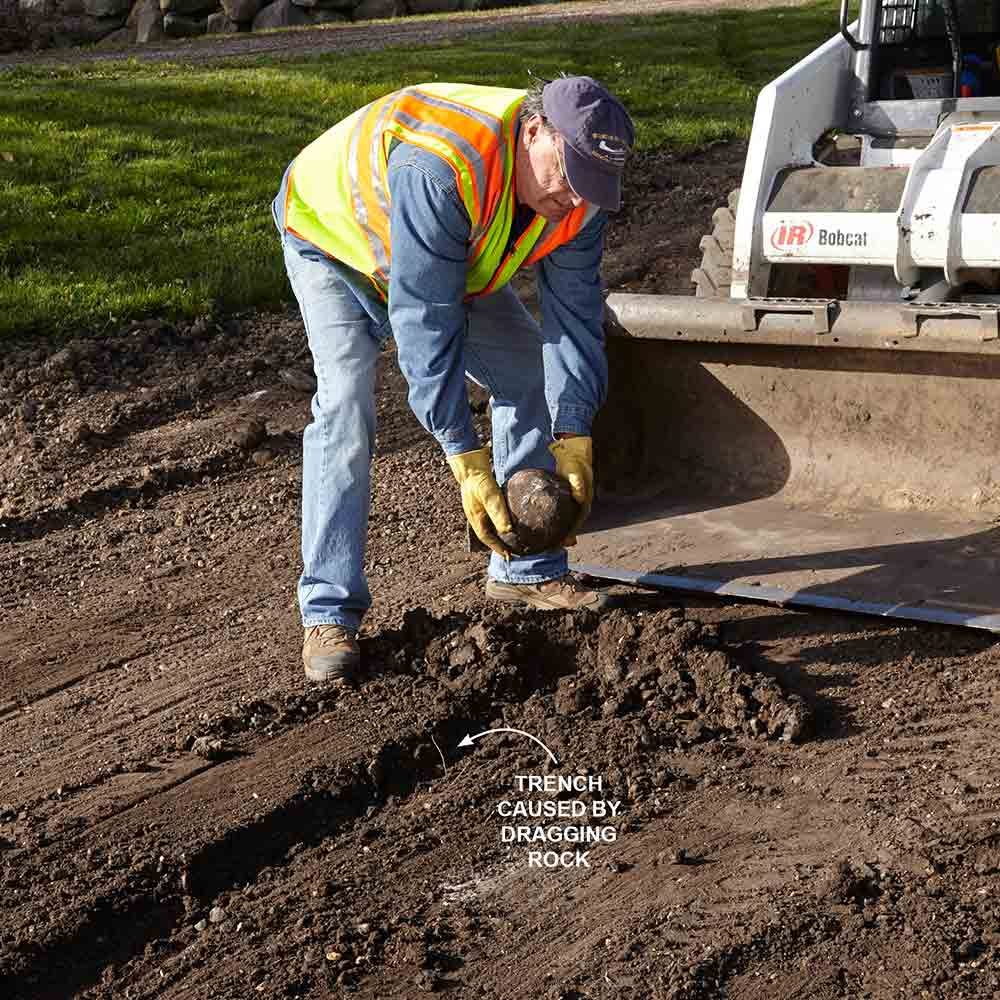
Handpick Stubborn Rocks Before Grading with a Skid Steer
Rocks are a headache when you’re trying to grade a surface smooth. They create a trench as you drag them. It’s tempting to try to pick them up and move them with the skid steer bucket, but it’s rarely that easy. You can waste a whole bunch of time messing around trying to grab hold of one stubborn rock. You’ll get lucky sometimes, but your best bet is to get out and physically throw them aside. Even top-tier skid steer handlers get out of the machine every once in a while.
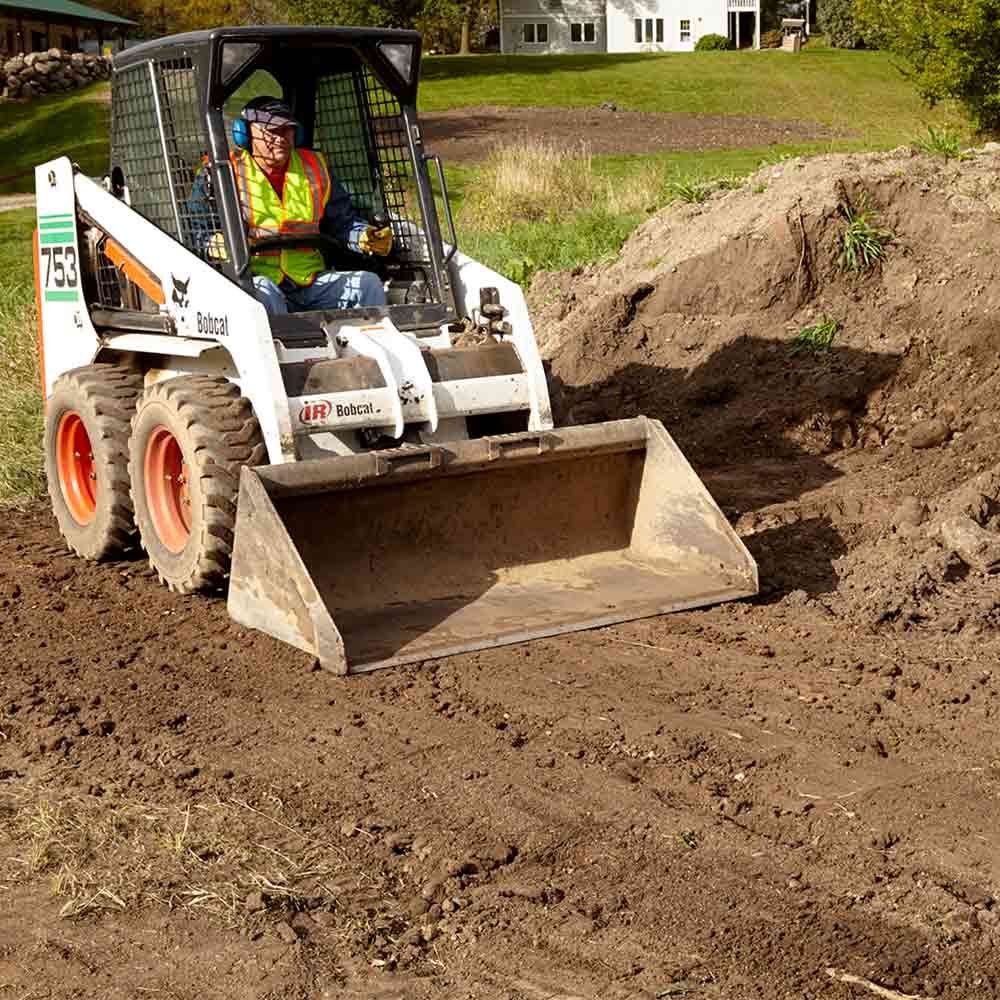
Keep the Work Area Smooth
Skid steers are notoriously tough on the terrain. It’s easy to tear up the ground in very little time. Skid steers don’t have a suspension, so holes and ruts in the ground make for an extremely rough ride. Take the time to occasionally smooth out your work area—your back will thank you.
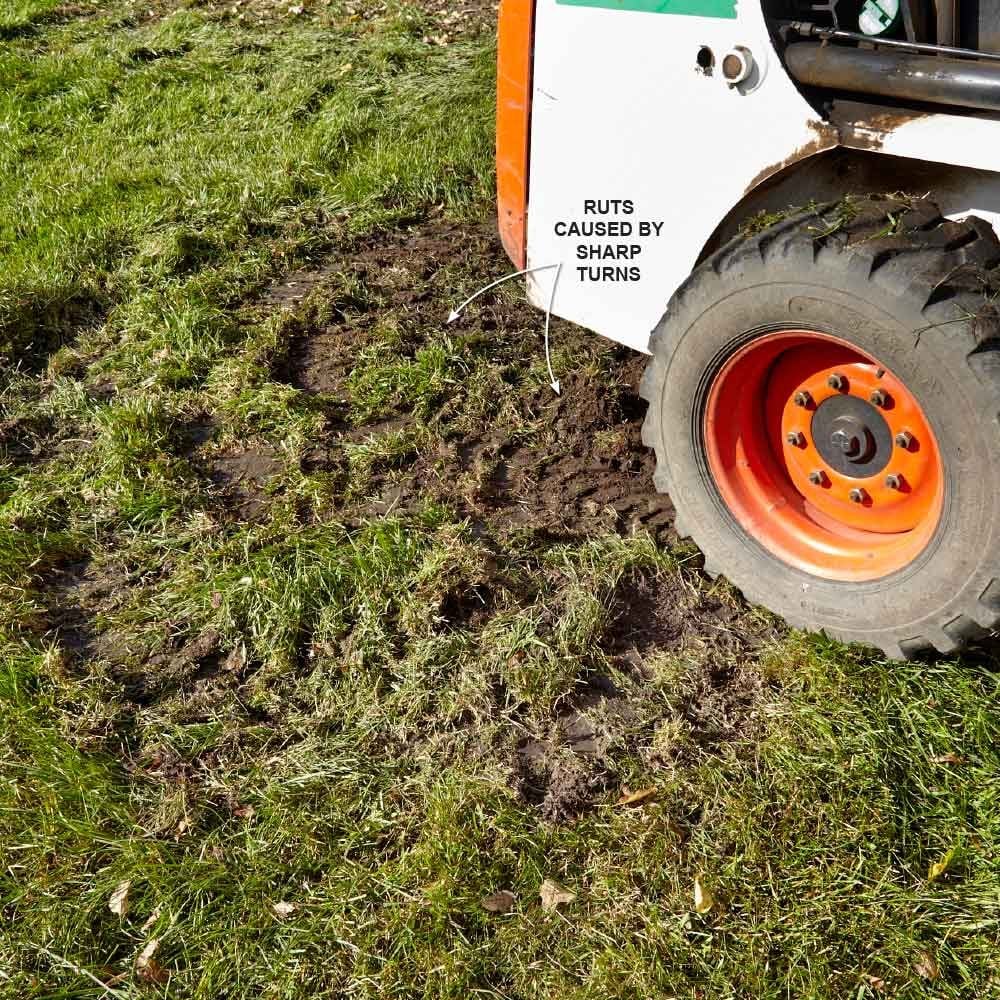
Tight Skid Steer Turns Wreck the Grass
Skid steers turn when the set of tires on one side spin at a different speed than the ones on the other side. This causes a “skid,” which wreaks havoc on the ground. Make long, wide turns to reduce the damage to lawns, driveways or any ground surface you don’t want to destroy. Smaller machines with rubber tracks will do less damage, but they’ll still rip up the turf if you sit in one spot and spin in a circle. Also, wet soil is more susceptible to ruts, so if possible, carry out your project when the ground is relatively dry.

Fill a Skid Steer Bucket Before Tipping it Back
Push the bucket straight into the dirt pile before tipping it back or the bucket will act like a plow and stop all forward movement. Sometimes it helps to wiggle the bucket up and down in order to worm your way into the pile.
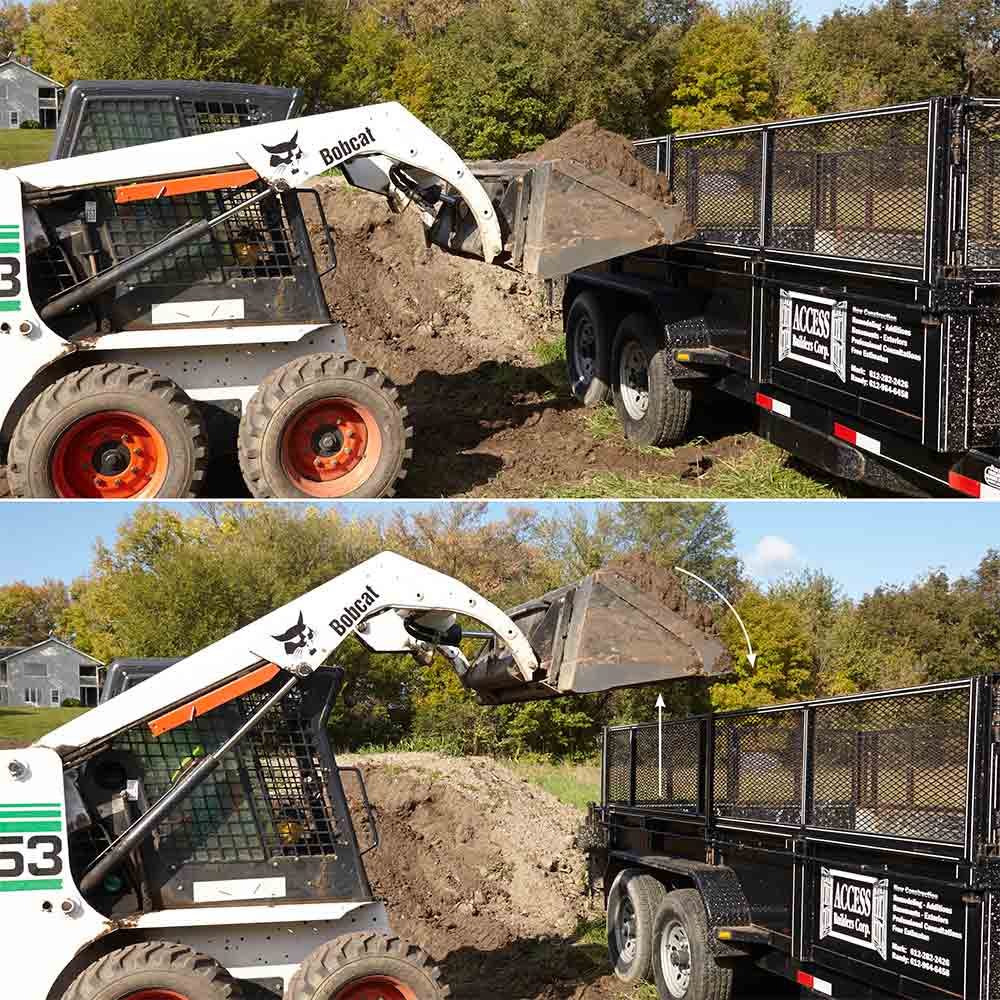
Tilt the Skid Steer Bucket as You Lift
Whenever you lift a load high in the air, tilt the bucket down as you lift. If you don’t, the load will spill over the back side of the bucket and end up right on top of the machine. It’s a messy rookie mistake, and unless you enjoy the taste of dirt (some of that dirt will end up in the cab), it’s one you’ll want to avoid. Many higher-end machines have a self-leveling bucket feature.

Carry Skid Steer Loads Low and Uphill
A short wheel base makes skid steers super maneuverable, but it also makes them unstable, especially with the arms raised high. Whenever you’re transporting a load, keep it low—just high enough so you don’t bottom out on the ground. When working on hills, the heavy side of the machine should always face uphill. If the bucket is full, the front side is the heavy side; the opposite is true if the bucket is empty. That means you’ll occasionally have to back up or down a steep grade. Avoid traversing hills sideways; keep the machine facing either up or down the hill.
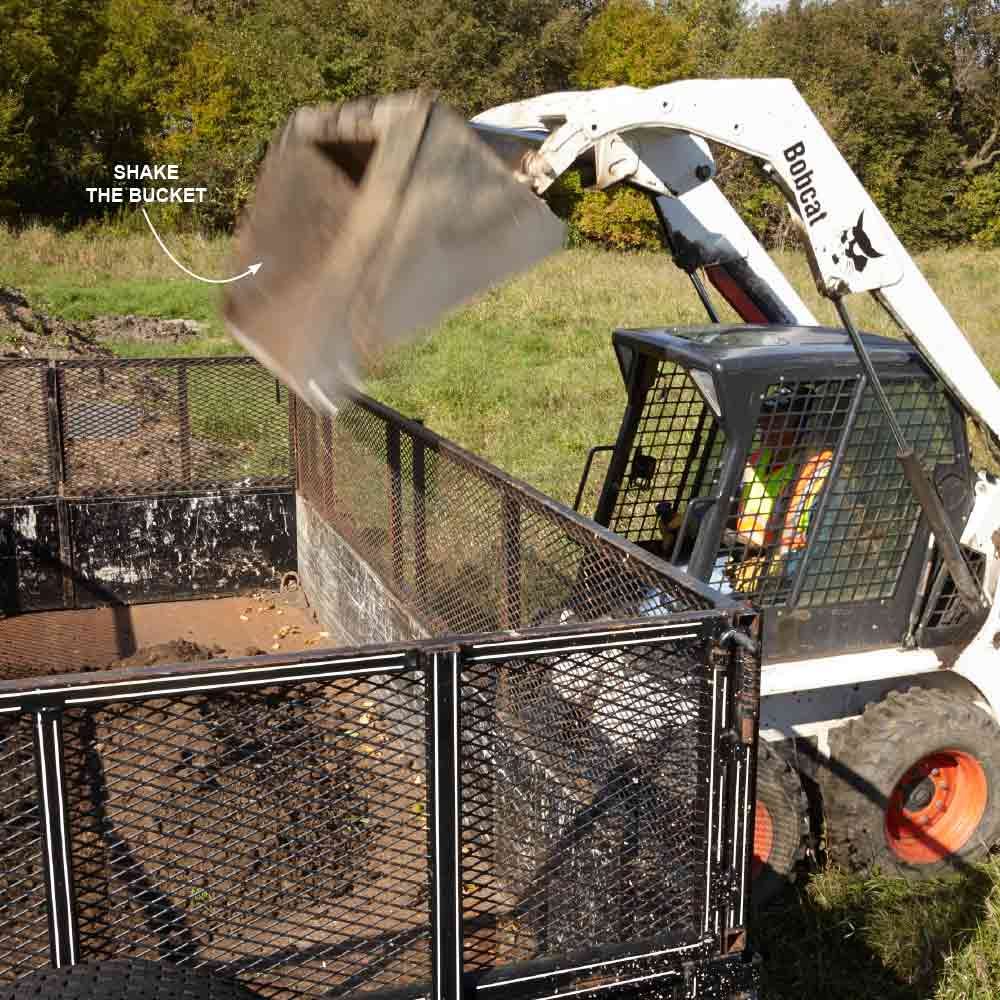
Shake a Skid Steer Bucket Clean
Wet or heavy soils can stick to the inside of the skid steer bucket. When you dump a load, tap the controls to shake the bucket back and forth to free up the more stubborn chunks. Occasionally get out and check to make sure the bucket is clean. A half-full bucket is an inefficient way to move dirt around. Keep a shovel nearby to scrape it out. Dirt is more likely to get stuck in a rusty, pitted bucket, so if you get to choose your rental machine, get one with a well-maintained bucket.
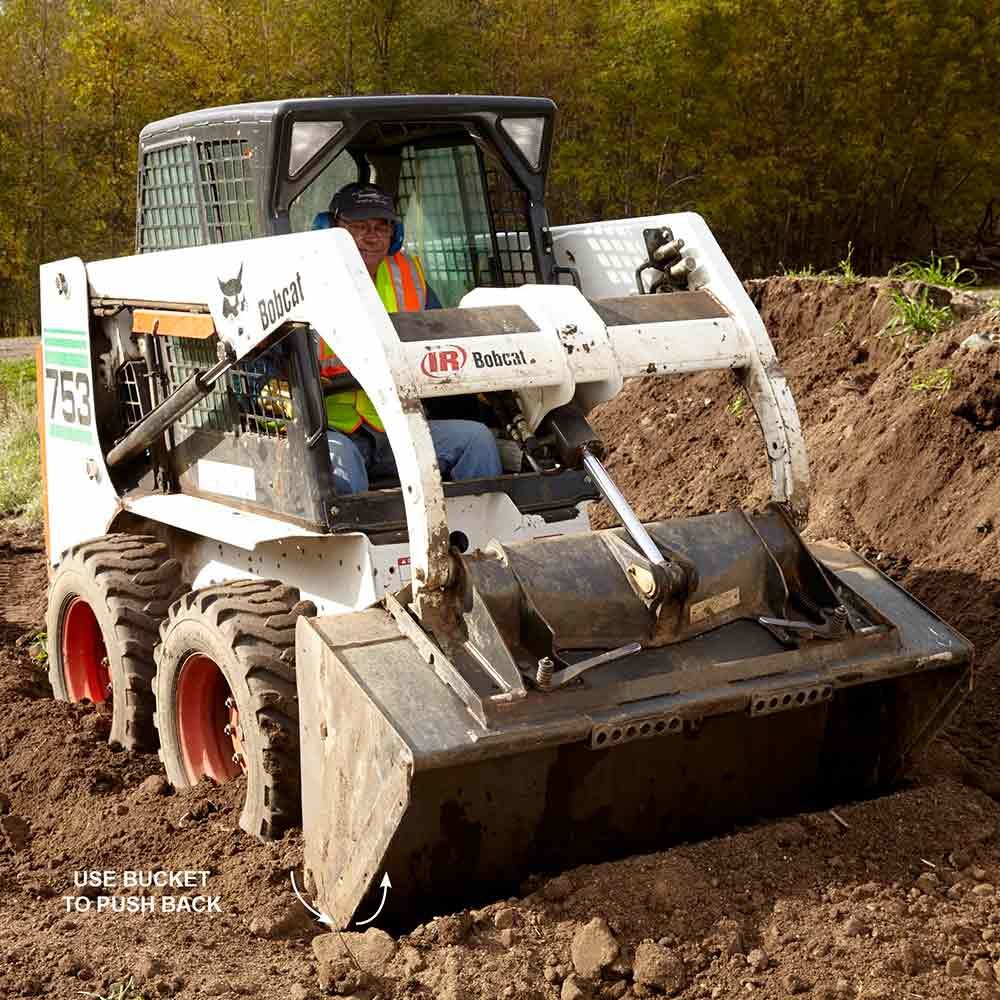
Use a Skid Steer Bucket to Get Unstuck
It’s not hard to get stuck in slippery clay or loose, sandy soil, but it’s easy to get unstuck by using the bucket to push your way out. It only works one way—you can’t get unstuck by pulling yourself out. When you’re backfilling the inside of a basement or foundation, always drive straight in and back straight out. If you get stuck with your back up against a wall, you’re in trouble. If you know the soil conditions are going to be dicey, rent a skid steer with tracks; tracked machines are much less likely to get stuck.
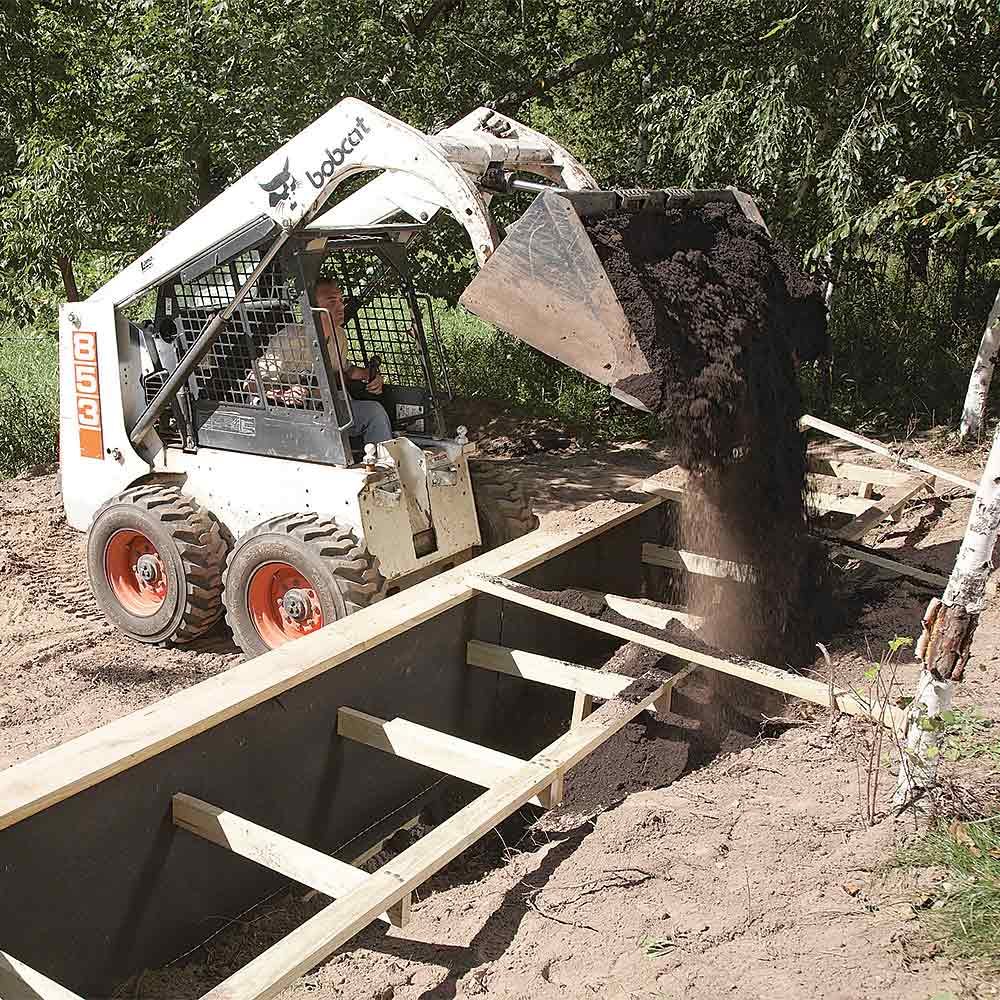
Skid Steer Safety Tips
Keep these tips in mind when you’re operating a skid steer.
- Get familiar with the controls. Practice at half speed for a while before loading the bucket.
- Shut off the engine before exiting the machine.
- Never walk under raised arms.
- Always wear hearing protection.
- Never lift or transport passengers on any part of the skid steer.
- A seat belt will keep you in the machine in case of a rollover, and it will also prevent your body from slamming against the bar if you come to a sudden stop.
- Call 811 to have the utilities located (before you dig!)



















